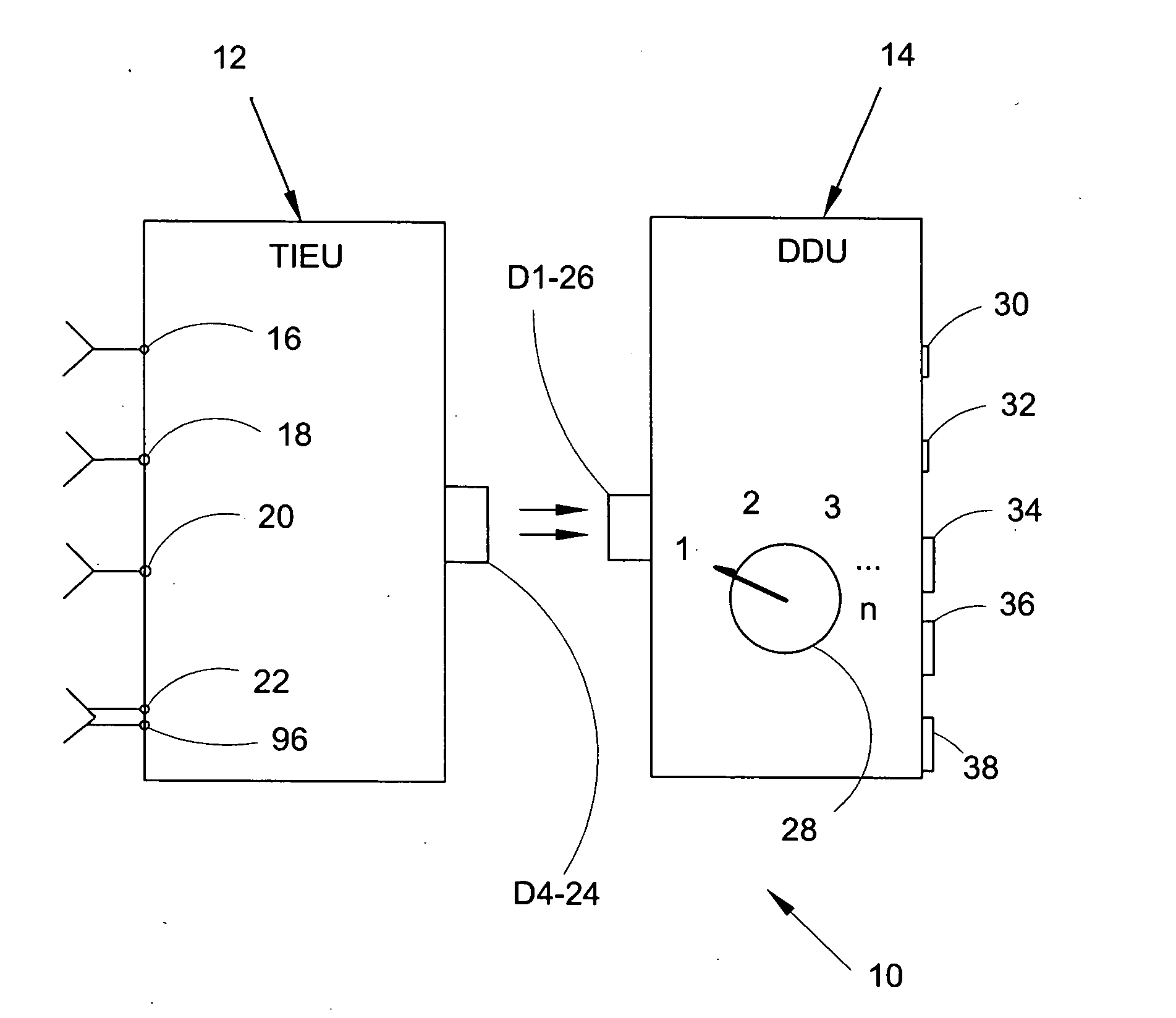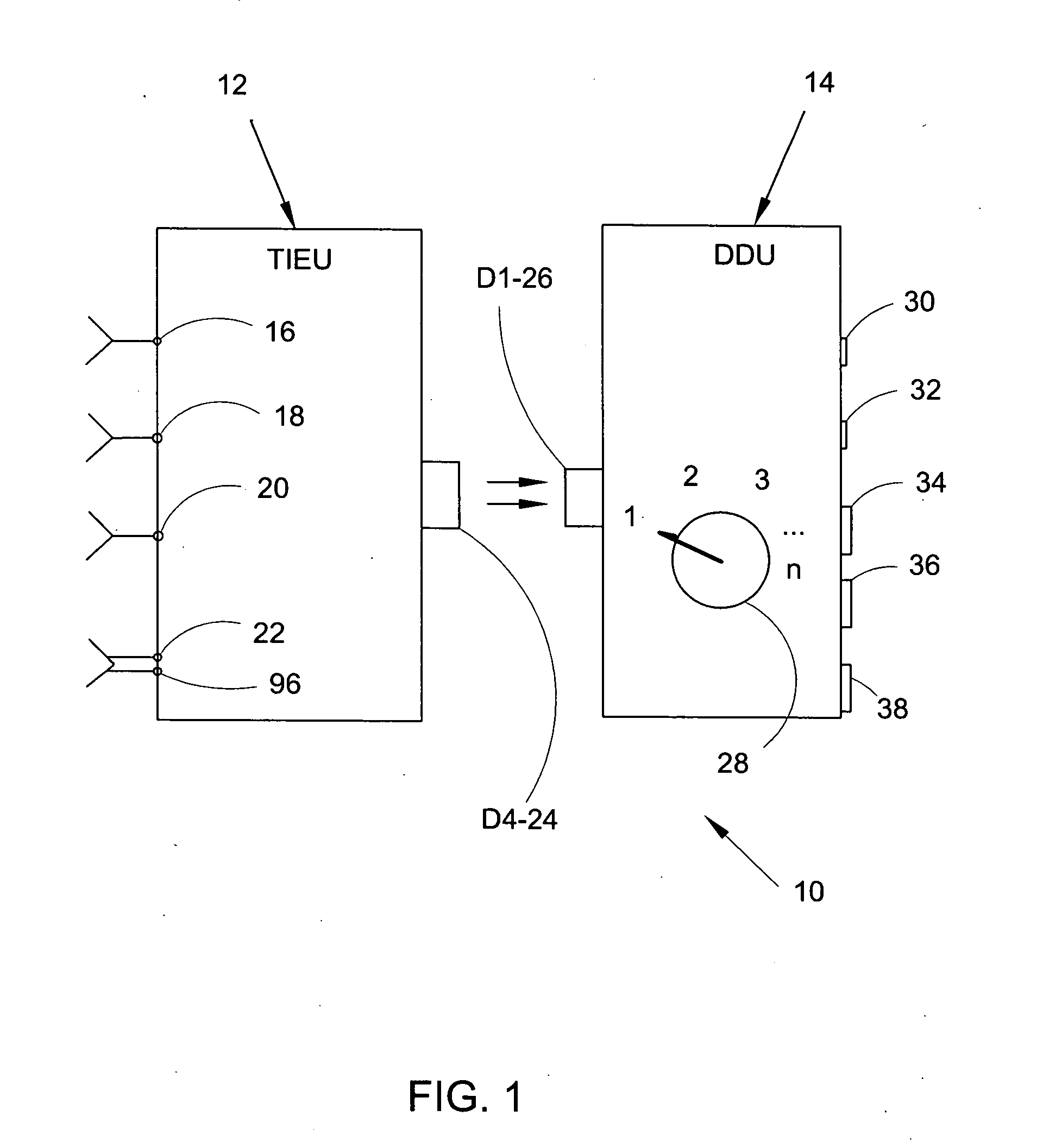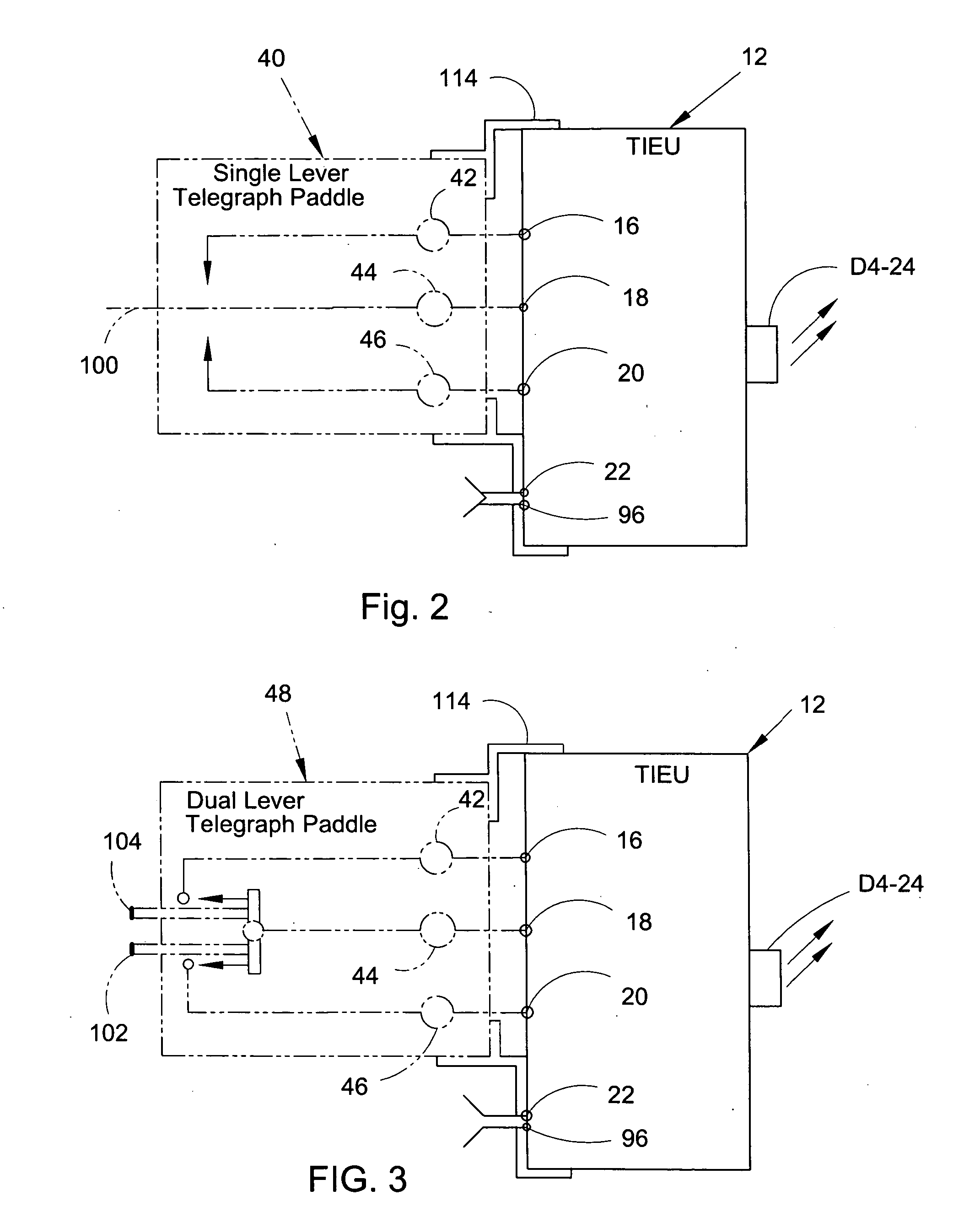Wireless keying for a continuous wave (CW) amateur radio transmitter
a continuous wave (cw) and transmitter technology, applied in the direction of electrical equipment, special services for subscribers, dot-and-dash transmission equipment, etc., can solve the problems of difficult and cumbersome task of moving the telegraph sending instrument from one transceiver to another, difficult to see behind, difficult to move, etc., to achieve the effect of not easy to move, easy to see, and great possibility of electrical shock to the operator
- Summary
- Abstract
- Description
- Claims
- Application Information
AI Technical Summary
Benefits of technology
Problems solved by technology
Method used
Image
Examples
Embodiment Construction
[0105] In order that the invention may be more fully understood, it will now be described by way of example with reference to the accompanying drawings which represent and illustrate several embodiments of Wireless Keying System for a continuous wave (CW) amateur radio transmitter 10. Wireless Keying System 10 can be utilized with input from personal computer 54, Telegraph hand or straight key 50, single lever telegraph paddle 40, or dual lever telegraph paddle 48 and its output is easily switched to one of several transmitters 58 through 64 by turning keyed output / transmitter selector 28 to the desired transmitter number.
[0106] Turning to FIG. 1, the two units that make up Wireless Keying System 10, Telegraph Instrument Encoding Unit (TIEU) 12 and Dit / Dah Decoding Unit (DDU) 14, are represented in block diagrams.
[0107] TIEU 12 is shown with the four possible inputs from the various sending units mentioned above. The inputs that can be received are Dah input 16, Dit / Dah reference ...
PUM
 Login to View More
Login to View More Abstract
Description
Claims
Application Information
 Login to View More
Login to View More - R&D
- Intellectual Property
- Life Sciences
- Materials
- Tech Scout
- Unparalleled Data Quality
- Higher Quality Content
- 60% Fewer Hallucinations
Browse by: Latest US Patents, China's latest patents, Technical Efficacy Thesaurus, Application Domain, Technology Topic, Popular Technical Reports.
© 2025 PatSnap. All rights reserved.Legal|Privacy policy|Modern Slavery Act Transparency Statement|Sitemap|About US| Contact US: help@patsnap.com



